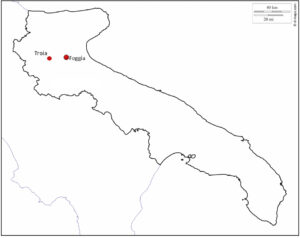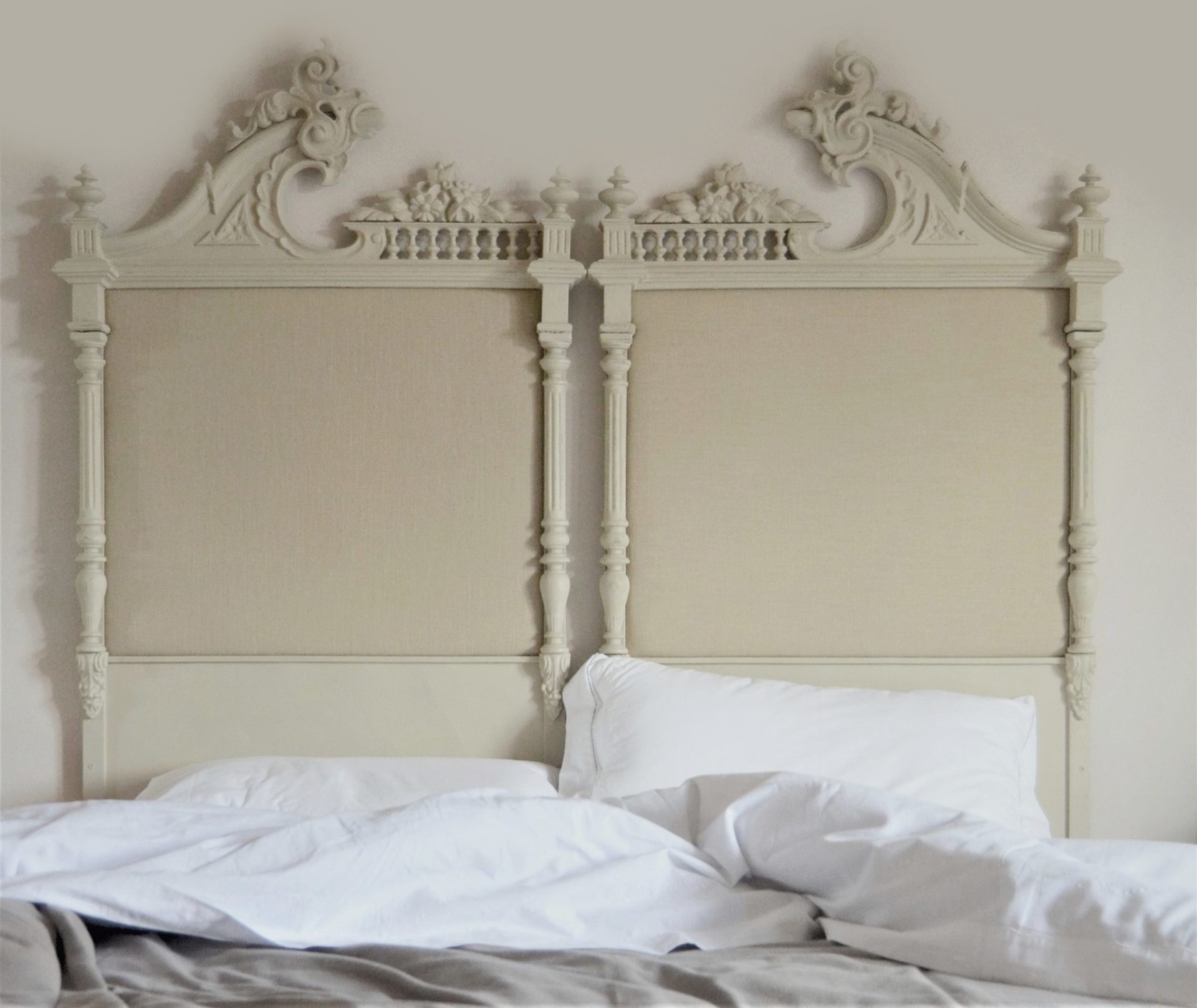Troia Cathedral is a masterpiece of Apulian Romanesque architecture and is particularly noted for the rose window and the bronze doors of the west front. Formerly the seat of the Bishops of Troia, it is now a co-cathedral in the diocese of Lucera-Troia.
A Byzantine church formerly stood on the site, apparently constructed largely from the remains of Roman buildings. Work on a new cathedral began in the last quarter of the 11th century. It is certain that the cores of the two western pillars of the crossing date from the very first building phase, and possibly served the same purpose in the original church.
The church received its present groundplan however in the first quarter of the 12th century through the substantial enlargements of Bishop William II of Troia, who from 1093 had the present nave built. The construction of the present apse may well also date from this period. An inscription on the bronze doors of the main portal indicates that this was finished in 1119, by which time the construction of the nave was clearly more or less completed. In 1107 work began on the lower part of the west front. Further works, particularly on the upper part of the west front, took place in the 13th century. The sacristy and the two arms of the transept received their present form in the 17th and 18th centuries; the eastern arm of the transept still contains older material in its external walls. The present bell tower also stands in part on walls of the 11th century.

West front and rose window
The west front of the cathedral is richly decorated. The lower part was built as part of Bishop William's works that took place between 1107 and 1120; the upper part was redesigned about 100 years later, but was overhauled, while retaining the older work, from 1229.
The lower part of the west front is 19 metres wide and divided into seven parts. To left and right of the main portal are three blind arches, supported by pilasters with varying forms of capital. The central blind arches on both sides each contain a round window, while the flanking arches are worked in a lozenge pattern. Like the external parts of the nave, which also follow this basic structure, they are very finely worked in a variety of building stones. The construction of the church exterior is thus held to be unusually ornate for Apulia.
The main portal itself is outlined by a simple archivolt. In the architrave is a relief showing Christ in the centre accompanied by Mary to the left and Saint Peter to the right. Beyond them on either side are two of the symbols of the Evangelists, and on the outside the patron saints of the town, Saints Eleutherius and Secundinus. Along the lower edge of the relief is the Latin inscription Istius ecclesiae per portam materialis introitus nobis tribuatur spiritualis ('Through the door of this material church may there be granted to us the entry to the spiritual').
The upper part of the west front, up as far as the top of the rose window, dates from the period up to about 1180, while the point of the gable and its outermost surfaces are from the alterations at the beginning of the 13th century.
Rose window
The rose window is famous as one of the most beautiful in Apulia. It consists of eleven slender columns assembled in a wheel, the spaces between them filled with decorative carved stone grilles (transenne), a very rare form of the rose window. Each transenna is differently worked, and some have an Oriental effect. The surround consists of overlapping arches, with the interstices pierced by trefoils. Also remarkable are the carvings of the inner of the two arches overhanging the window, consisting of a multiplicity of animals and human forms, among them a boy relieving himself. These arches are supported by double columns on the backs of lions.

Bronze doors
The famous doors of the main portal were made by one of the most celebrated bronze-casters of the 12th century, Oderisio of Benevento; according to the inscription, they were finished in 1119. They contain 28 panels in niello work. The door knockers in the mouths of lions and the small figures of winged dragons, representing fear and desire are the originals, little masterpieces of medieval sculpture. Many of the panels were replaced during the 16th and 17th centuries, but the four along the top row are still the originals.

Interior
The church is built on a Latin cross plan and contains a central nave, the height of which is perhaps the most striking feature of the interior, and two side-aisles separated by two round-arched arcades of 6 marble columns each. The forms of the capitals vary, but most are of the Corinthian Order. The first column to the west is a double column, the only one in the building, thus making a total of 13 columns. There is no ceiling, leaving the construction of the roof above the massive corbels open to view. The nave is not precisely symmetrical: at the crossing the central axis deviates a few degrees to the north, as can be seen by the difference in the distances between the north and south columns at the crossing.

The pulpit is located between the fifth and sixth columns on the north side. It is supported by small columns with strongly worked capitals of the Corinthian order. It dates from the Norman-Staufer period of Apulia, and is reckoned as one of the masterpieces of the period. It originally stood in the Basilica of San Basilio in Troia and was not moved to the cathedral until 1860. According to the inscription that runs round it, it was built in 1169. At the front, supported on a single small column, is a lectern on the back of a Staufer eagle, which is striking at a hare. On the left side is a relief showing a lion attacking a sheep while itself being attacked by a dog, an ancient Oriental motif. The disparity of the various elements strongly suggests that the pulpit was assembled from already existing parts that were to hand.
The cathedral treasury contains some important medieval artworks, among them three Exultet rolls as well as equipment and robes for the Mass.



The city of Troia is about 22 km away from the B&B La Casa Pugliese.



